September 27, 2014
Among the Ancients
On our trip to Colorado this summer, one of the places I really wanted to visit again was the Mt. Goliath Natural Area. We briefly stopped here on our first trip west, but I was alone in wanting to spend more time here and felt rushed, plus I did not own a decent camera then. This summer there was no rush, and Sherpa Girl K and I were able to wander leisurely among the bristlecone pines (Pinus aristata). Some of these wonderfully gnarled trees are between 1000 and 1600 years old, which given my own species' record of stewardship on this planet, it is totally remarkable that these plants are still able to survive. The natural area has a small visitors center where you can learn more about the surrounding environment, and immediately outside, native wildflowers are showcased in an alpine garden, but it was the pines I came to see.
Bristlecones are extremely well adapted to their environment, which is quite harsh. The soils are thin, rocky and poor, the winter temperatures are brutally cold, the rain is sparse, but the wind is not, and this high up the sun's radiation is intense. The trees have adapted by growing very, very slowly, making the wood dense, strong and resistant to diseases, insects, rot and bacteria. Each needle can last close to 20 years, minimizing the amount of energy needed to produce new growth. The gnarled and twisted trunks make the trees more resistant to the strong winds. The large amount of dieback on the bark and in the xylem layer reduces the need for moisture and nutrients when the trunks have been damaged by drought or fire. The relatively large distance between specimens helps keep fire from spreading when one of the pines has been hit by lightening. Even when one does die, it can take many decades for the ghost tree to finally fall to the forest floor.
I would love to know what this tree was trying to tell us, but the alphabet was not familiar.
If you haven't had your fill, my complete set of photos from my morning at Mt. Goliath can be seen here, at my flickr page, and while you are looking at them, do so trying to imagine the feel of cool crisp air, and the smell of fresh Christmas trees.
Labels:
Colorado,
Hiking Trails,
Making Time for Church
Subscribe to:
Post Comments (Atom)
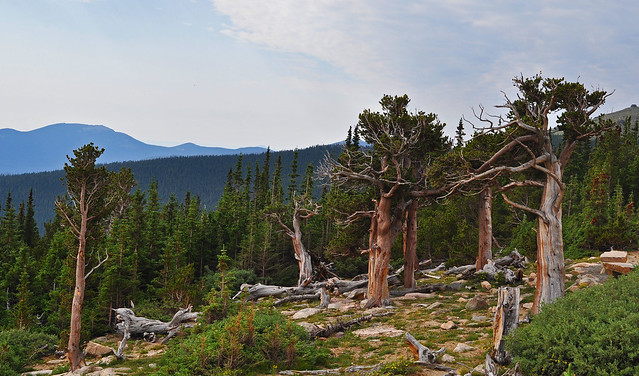
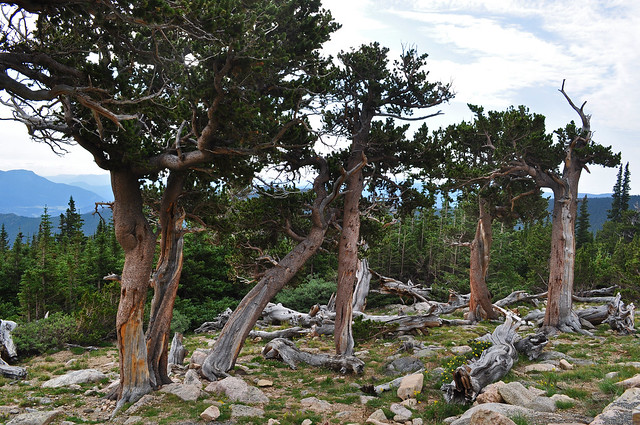

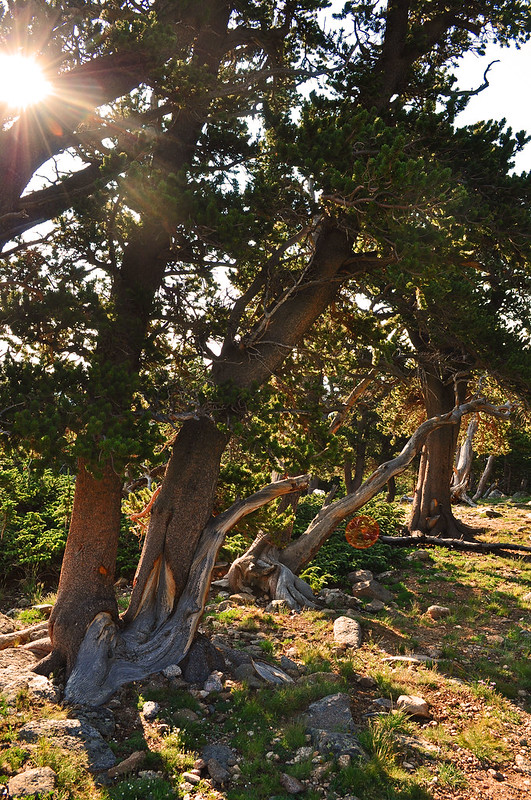
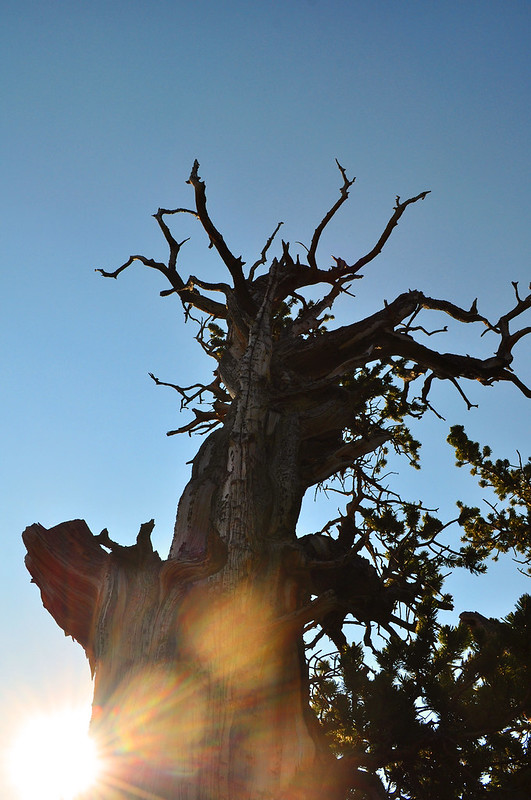
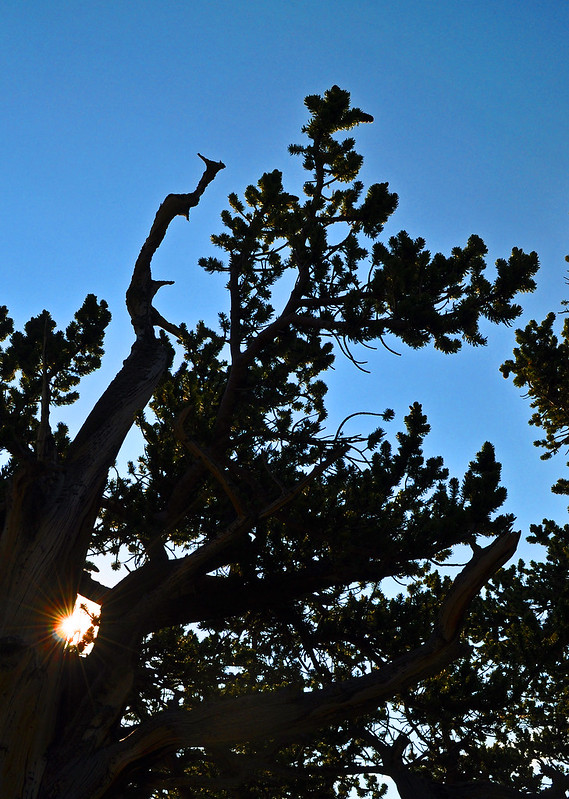

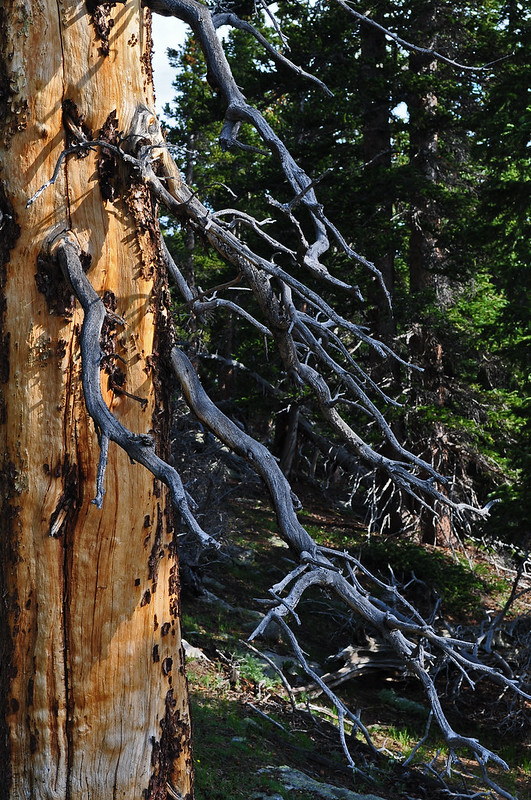

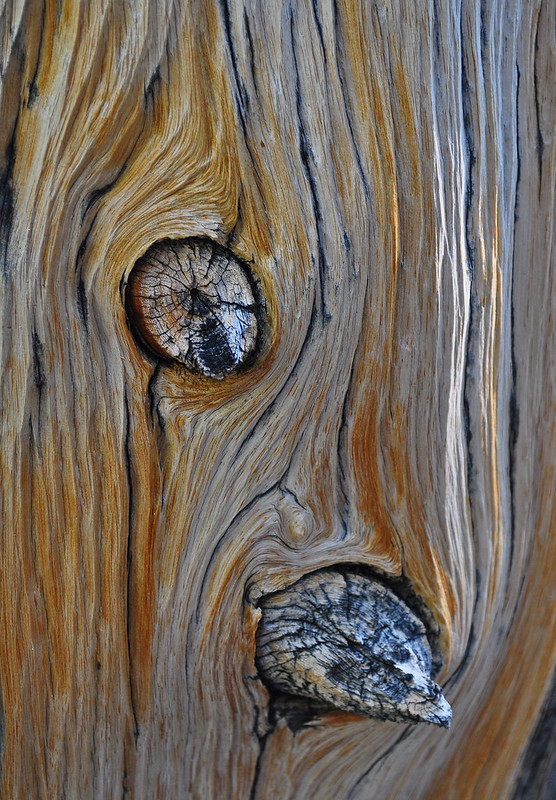
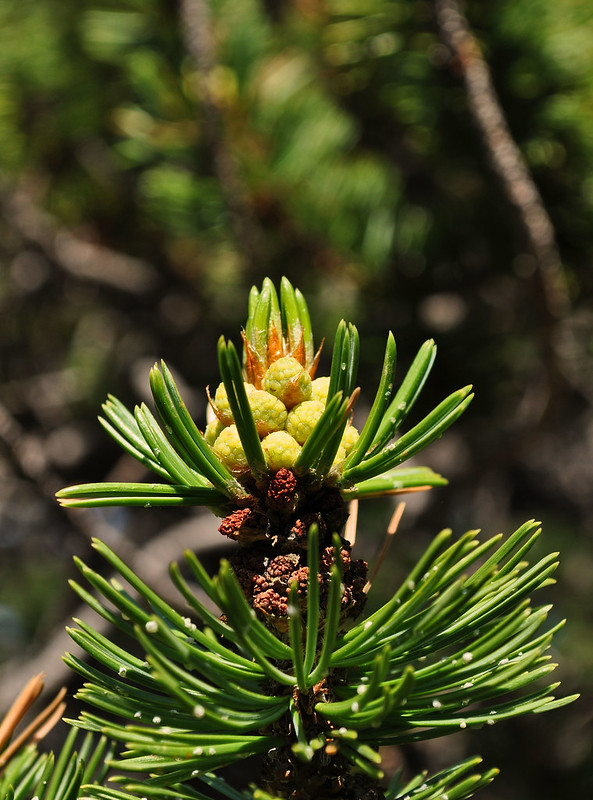
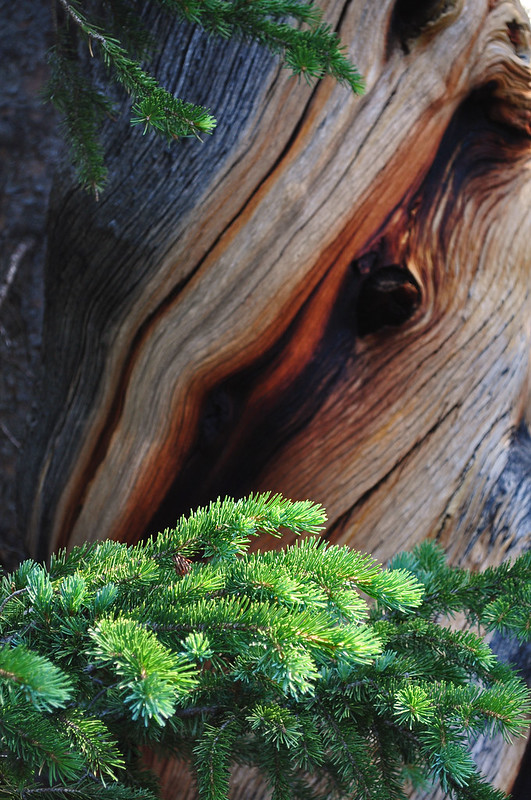
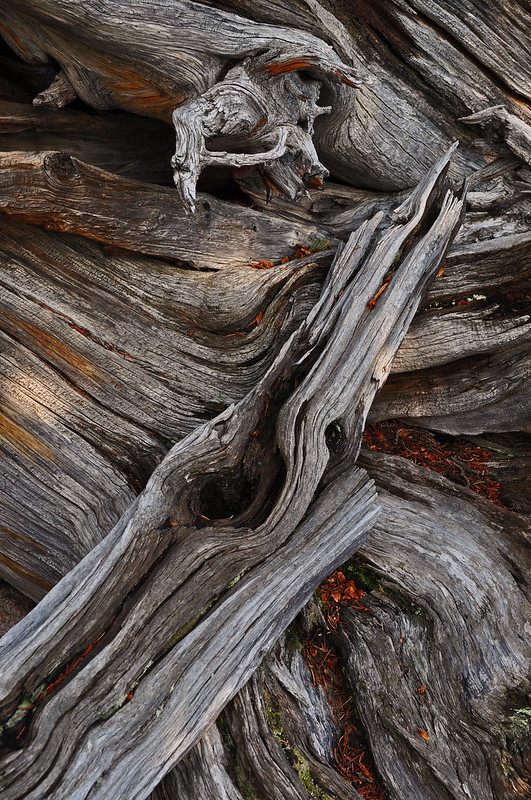

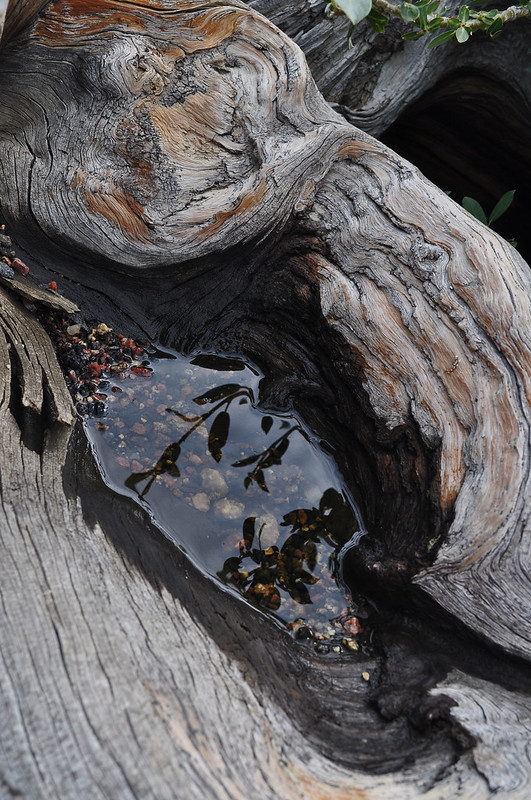

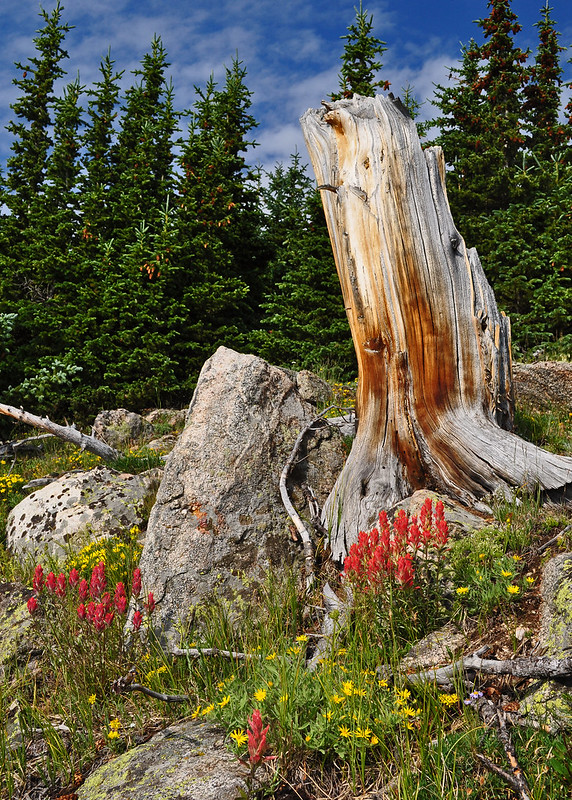
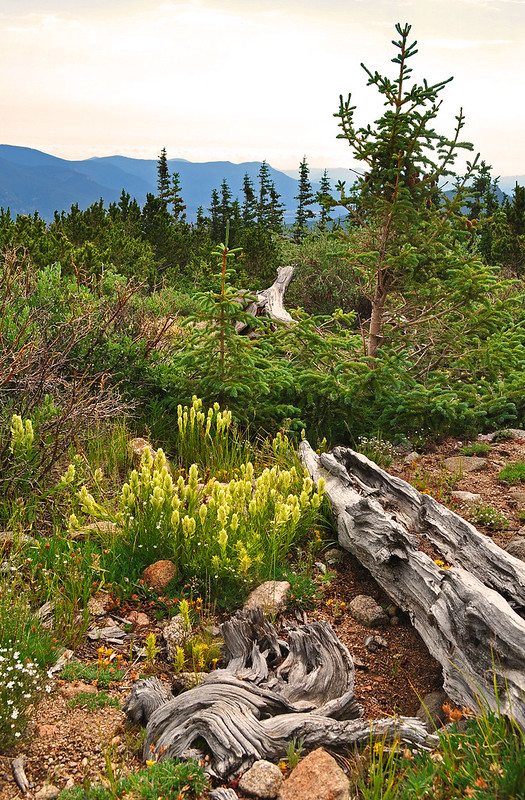
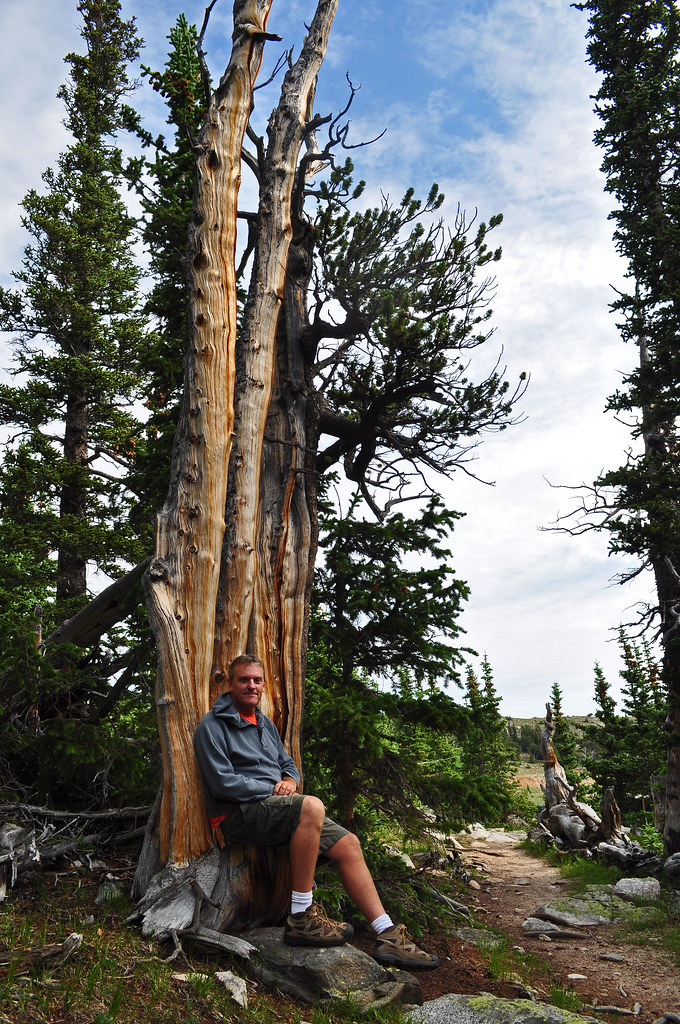




It's cool and crisp today here in Flagstaff, and I can smell ponderosa sap from the trees beside the patio. I can't get enough of your "out west" posts! Thanks for sharing.
ReplyDeleteThanks Michael. I am still going through my photos, but was able put another batch from Salida on Flickr this a.m.
DeleteAmazing that these beautiful trees can grow in such an unforgiving environment. This had to be a spiritual experience for you. The Royal Throne looks like a perfect resting spot!
ReplyDeleteAnnie, it was indeed a very spiritual experience, and some of the beauty I saw further up the mountain actually caused me to tear up a bit.
DeleteBeautiful photographs, as usual. And beautiful eye.
ReplyDeleteThanks, James.
DeleteYour photos are beautiful! I'm especially drawn to the ones highlighting the twist and twirl of the wood grains on the trunks, as well as the "alphabet" and the little bowl of water.
ReplyDeleteDid you notice in the water that, in the shadow, there appears to be a face? I don't think it's a reflection of you as photographer, I think it's just a coincidental placement of the pattern in the stones at the bottom of the water, which are allowed to appear through the water surface at that spot because of the shade. But I could be wrong. Anyway, it kept drawing my eye!
Gaia, I did not see the face in the water, but it was still very special to me. I dipped my fingers in it and touched them to my forehead, taking it as a blessing.
DeleteReally beautiful and fascinating. I would love to see the brislecones for myself.
ReplyDeleteJason, it is worth a trip.
DeleteSlow is beautiful. Slow is good. We humans are in too much of a hurry.
ReplyDeleteHB, you speak the truth.
DeleteI saw the complete set on Flicker: Awesome. I'm fascinated by the stats: each needle lasts almost 20 years?! It could be useful as my own pine goes through a serious needle loss every fall... These trees are humbling, they've been around for so long. I hope you hugged a few while you were there :-)
ReplyDeleteChav, I hugged more than a few.
DeleteBeautiful shots of the bark. The old wood really does look like bones or antlers lying on the ground.
ReplyDeleteSweetbay, I wanted to take home some of that fallen wood. It was beautiful.
DeleteWhat a wonderful, informative post Les. Enjoyed the lovely images and learning about these slow and steady wins-the-day trees.
ReplyDeleteSybil, I am glad you enjoyed the post.
DeleteWay cool and I feel the air and smell the humic acid from the soil. Wow! Love the photos, makes me want to move back there. The economy when I lived in the springs was poor. Now I suppose the 'green' economy has changed things. ha ha.
ReplyDeleteGreggo, though we did not visit any of the "pharmacies" they were quite evident.
DeleteThose pines are magical, I particularly love your close-ups of the bark. Long may they continue to decorate the landscape with their beauty and that presence that only truly ancient trees seem to have.
ReplyDeleteJanet, the land where these trees grow is protected, and they will hopefully be around for a long time, barring any major changes in climate (oh, that's happening, isn't?).
DeleteWhat a treat it was to stop in and see these portraits. Only a place with such harsh conditions could produce a tree this strong. Amazing to think that they are over 1000 years old.
ReplyDeleteYes Jennifer, I can't help but think that adaptation to this environment is what gives them their strength. However, I imagine that if you took them out of that world, they would be different trees.
DeleteGlad you had the chance to make a return trip and we got to share in it. Really amazing trees. Though I am familiar with them, I've never really seen such a broad selection of their variations.
ReplyDeleteLinda, there were no two alike. Each had their own character.
DeleteExtraordinarily beautiful. Was that you in the final photo? I finally decided that I would go to the Perennial Plant Conference and now I missed the deadline by a day and they might be full. I will email you if come s I would like to meet you. You are also cleome to stop by Carolyn's Shade Gardens.
ReplyDeleteCarolyn, that is indeed me in the last photo. Hopefully we can run into each other at the PPC. I would love to stop by your place, but the rest of the weekend will be spent with my brother and our parents. I am already trying to get them to tour James Golden's garden for Open Days on Sat., so I am not sure how much further I can push them garden-wise.
Delete